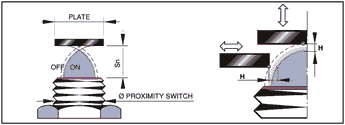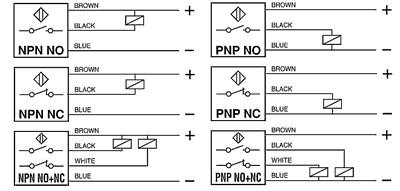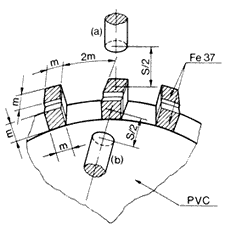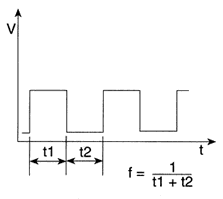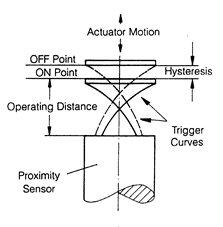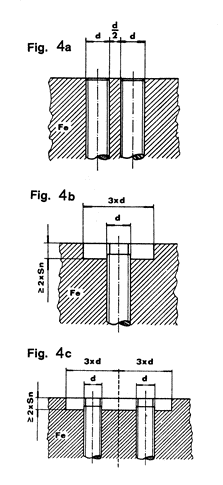Photoelectric sensors represent perhaps the largest variety of
problem solving choices in the industrial sensor market. Today ’s
photoelectric technology has advanced to the point where it is common to
find a sensor that will detect a target less than 1 mm in diameter
while other units have a sensing range up to 60 m. These factors make
them extremely adaptable in an endless array of applications. Although
many configurations are available including laser-based and fiber optic
sensors, all photoelectric sensors consist of a few of basic
components. Each contains an emitter, which is a light source such as
an LED
(light emitting diode) or laser diode, a photodiode or phototransistor
receiver to detect the light source, as well as the supporting
electronics designed to amplify the signal relayed from the receiver.
Probably
the easiest way to describe the photoelectric operating principal is:
the emitter, also referred to as the sender, transmits a beam of light
either visible or infrared, which in some fashion is directed to and
detected by the receiver. Although many housings and designs are
available they all seem to default to the basic operating principal.
Just as the basic operating principal is the same for all photoelectric families, so is identifying their output.
“Dark-On” and ”“Light-On” refers
to output of the sensor in relation to when the light source is hitting
the receiver. If an output is present while no light is received, this
would be called a “Dark On ” output. In reverse, if the output is ON
while the receiver is detecting the light from the emitter, the sensor
would have a “Light-On ” output. Either way, a Light On or Dark On
output needs to be selected prior to purchasing the sensor unless it is
user adjustable. In this case it can be decided upon during
installation by either flipping a switch or wiring the sensor
accordingly.
The method in which light is emitted and delivered
to the receiver is the way to categorize the different photoelectric
configurations. The most reliable style of photoelectric sensing is
the
through beam sensor. This technology separates the emitter
and receiver into separate housings. The emitter provides a constant
beam of light to the receiver and detection occurs when an object
passing between the two breaks the beam. Even though it is usually the
most reliable, it often is the least popular due to installation
difficulties and cost. This is because two separate pieces (the emitter
and receiver) must be purchased, wired and installed. Difficulties
often arise in the installation and alignment of two pieces in two
opposing locations, which may be quite a distance apart.


Through beam photoelectric sensors typically offer the longest
sensing distance of photoelectric sensors. For example, units are
available with a 25 m and more sensing range. Long range is especially
common on newly developed photoelectric sensors such as models
containing a laser diode as the emitter. Laser diodes are used to
increase sensing accuracy and detect smaller objects These units are
capable of transmitting a well-collimated beam with little diffusion
over the sensing ranges as long as 60 m. Even over these long
distances, some through beam laser sensors are capable of detecting an
object 3 mm in diameter, while objects as small as .01 mm can be sensed
at closer ranges. However, while precision increases with laser
sensors the speed of response for laser and non-laser through beam
sensors typically remain the same, around 500 Hz. An added bonus to
through beam photoelectric sensors is their ability to effectively sense
an object in the presence of a reasonable amount of airborne
contaminants such as dirt. Yet if contaminants start to build up
directly on the emitter or receiver, the sensor does exhibit a higher
probability of false triggering. To prevent false triggering from
build up on the sensor face, some manufacturers incorporate an
alarm output
into the sensor ’s circuitry. This feature monitors the amount of
light arriving on the receiver. If the amount light decreases to a
certain level without a target in place, the sensor sends a warning out
by means of a built in LED and/or an output wire.
A very familiar
application of a through beam photoelectric sensor can be found is right
in your home. Quite often, a garage door opener has a through beam
photoelectric sensor mounted near the floor, across the width of the
door. This sensor is making sure nothing is in the path of the door
when it is closing. A more industrial application for a through beam
photoelectric is detecting objects on a conveyor. An object will be
detected anyplace on a conveyor running between the emitter and receiver
as long as there is a gap between the objects and the sensors light
does not “burn through ” the object. This is more a figurative term
than literal. It refers to an object that is thin or light in color and
allows the light emitted from the emitter to penetrate the target so
the receiver never detects the object.
Diffuse sensors operate under a somewhat different style than
retros and through-beams although the operating principle remains the
same: diffuse photoelectrics actually use the target as the “reflector”,
such that detection occurs upon reflection of the light off the object
back onto the receiver as opposed to an interruption of the beam. The
emitter sends out a beam of light. Most often it is a pulsed infrared,
visible red or laser beam, which is reflected by the target when it
enters the detectable area. The beam is diffused off of the target in
all directions. Part of the beam will actually return back to the
receiver inside of the same housing in which the sensor originally
emitted it from. Detection occurs and the output will either turn on
or off (depending upon if it is Light On or Dark On) when sufficient
light is reflected to the receiver. This can be commonly witnessed in
airport washrooms, where a diffuse photo will detect your hands as they
are placed under the faucet and the attending output will turn the water
on. In this application, your hands act as the reflector.

Due
to the operating principle of using the target as the reflector, diffuse
photoelectrics are often at the mercy of target material and surface
properties; a non-reflective target such as matte-black paper will
have a significantly decreased sensing range as compared to a bright
white target. But, what seems as a drawback on the surface can
actually be a benefit in practice. Because diffuse sensors are
somewhat color dependant, certain versions are suitable for
distinguishing dark and light targets in applications that require
sorting by contrast or quality control. Specialty versions of diffuse
sensors are even
capable of detecting different colors. Also, with only the sensor
itself to mount, installation of diffuse sensors is usually simpler than
for through-beams and
retros.
Deviations of sensing distances and false triggers when reflective backgrounds are present led to the development of other
diffuse sensors.
These new developments, allow the diffuse sensor to “see ” an object
while simultaneously ignoring any objects behind it.In the simplest of
terms, the sensor is looking out at specific point in the foreground and
ignoring anything beyond that point. There are two ways in which this
function is achieved, the first and most common is using
fixed-field technology.
In this technology, the emitter sends out a beam of light like a
standard diffuse photoelectric sensor. In turn, the light is received
by two receivers and a comparator then evaluates how the light is
received. One receiver is focused on the “sweet spot ” or desired
sensing location and the other on the background or long range. If the
comparator finds the long-range receiver is detecting a higher intensity
of reflected light, than the amount on the focused receiver, the output
will not turn on. Only when the intensity of light on the focused
receiver is above the long-range receiver will an output occur.
Adjustable sensing distance
versions are also available. The receiver element in an
adjustable-field sensor is accomplished by the use of an array of
receivers and a potentiometer to electrically adjust the sensing
distance.
Fixed-field and adjustable-field photoelectric sensors
operate optimally at their preset “sweet spot ”. They allow for the
recognition of small parts and a tight drop-off between the
sensed target and cutoff point. They also offer an improvement over a
standard diffuse sensors ’ difficulty in sensing different color
targets. However, target material surface qualities, such a high
gloss, can produce various results. In addition, highly reflective
objects outside of the sensing area tend to
send enough light intensity
back to the receivers for the output to trigger, especially when the
receivers are electrically adjusted.
To combat these limitations, a technology known commonly as true
background suppression by triangulation
was developed. True background suppression sensors emit a beam of
light exactly like a standard diffuse, but unlike fixed-field sensors,
which rely on light intensity, background suppression units rely
completely on the angle at which the beam returns to the sensor.
To
accomplish this, background suppression sensors employ two or more
receivers accompanied by a
focusing lens. The receivers remain in a
fixed position, while the lens is mechanically adjusted to change the
angle of received light. .This configuration allows for an extremely
steep cutoff between target and background, sometimes as small as .1
mm. Also, this is a more stable method when reflective backgrounds are
present, or large target color variations are an issue: reflectivity
and color affect the intensity of reflected light, not the angles of
refraction used by triangulation-based
background suppression photos.




















 Proximity Sensor
Proximity Sensor




